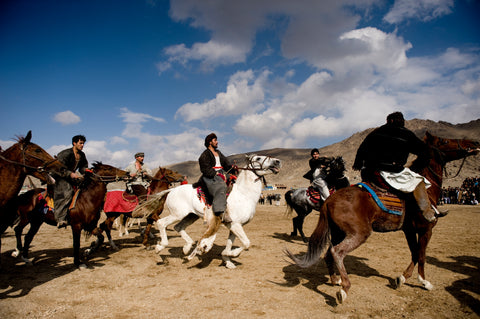Graveyard of Another Empire

Until the 1970s, Afghanistan was a relatively peaceful country and a popular stop-over on the ‘hippie trail’. All that changed in 1979 with the Soviet invasion that left hundreds of thousands, possibly millions, dead and caused a third of the population to flee their homes.

The Soviet presence also gave rise to a number of jihadist groups, ranging from the moderate Mujahedeen to more radical groups like the Taliban, all competing for funding from the USA to fight its proxy war with the Soviet Union. When the Soviets Army withdrew in 1988, a civil war ensued. The Taliban, supported by Pakistan, seized Kabul in 1996 and established the Islamic Emirate of Afghanistan which became a major training ground for radical jihadists.

Following the September 11 attacks, the Taliban leadership refused to hand over Osama Bin Laden, the mastermind of the attacks, then sheltering in the country. In response, a US-led coalition invaded Afghanistan, brining the Taliban regime to an end. As fighting subsided, Afghanistan became the focus of massive rebuilding efforts with billions of dollars pledged from around the world.

In the following years, as many Afghans returned from abroad with the hope of a better future, a fitful peace returned to the country. Before long, however, George W. Bush’s administration started to focus on Iraq, diverting its attention and money towards a much more audacious war.
By 2006 a growing insurgency against western armies stationed in Afghanistan had developed into a low-level war in Helmand and Kandahar provinces. Suicide bombs, previously unknown in Afghanistan, found their way from Iraq where they had become a depressing daily ritual. The resurgent Taliban, now funded by opium revenues, renewed their attacks on foreign and Afghan soldiers and, increasingly, on civilians.

Corruption and poverty remain a scourge in Afghanistan, driving people into the arms of the Taliban and away from the corrupt central government. Taliban ideology is still taught in the thousands of madrasas that are the main source of education for children and teenagers in many parts of the country. Drug addiction among men is high and has led to high unemployment. Widows of the tens of thousands who have died in the wars have been reduced to begging. Many families see themselves forced to marry off their young daughters to older men in exchange for dowries.

The UN's Mine Information Network estimates that over 60 people are killed or injured every month by landmines. Afghans fall victim to bombings, roadside mines and suicide attacks all too frequently. For those who survive, the medical and rehabilitation facilities are poor. Psychiatric hospitals in the country are struggling with the hordes of people mentally scarred by the years of violence. With a poor education system and clan-controlled infrastructure, the help and financial aid from the West is insufficient and often squandered. Over recent years the violence in Afghanistan has been significantly growing despite continued US presence in the country as the Taliban reasserts its control over rural areas. NATO troops departed the country in 2014 and the US, under the administration of Donald Trump, signed an accord with the Taliban in 2020. The new Biden administration, despite criticism from western partners and some US military leaders, decided to pull out all its troops by 11 September 2021, exactly twenty years after the events that brought American troops to the country in the first place, thus ending America’s longest war and costliest war.
While there are those who cheer the departure of the American forces, many Afghan are afraid of what will happen next. The Taliban already control much of the country and many fear that they will take the rest when the Americans leave. For many young Afghans born after the US invasion, life under the Taliban is alien and unimaginable. Another chapter in Afghanistan’s painful history is about to unfold.

Panos photographer Hossein Fatemi first went to Afghanistan for one month in 2007 to see the country as a photographer from Iran, a country that shares a border and deep socio-economic and cultural ties with Afghanistan. Hossein was working with international photo agencies in Iran at the time, but after the 2009 Iranian election protests and the ‘Green Movement’, his accreditation was revoked so he decided to stay in Kabul.

From his new base he worked as a freelance photographer, documenting the country - its rich culture, people, and the ongoing conflict. In 2010, Hossein became one of the first photographers with an Iranian passport to be allowed to embed with the US military. Through this unique experience he developed a sense of respect for the American Army, given the lack of constraints and restrictions placed upon his work in their midst. He remained in Afghanistan until 2012, documenting the situation in the country.

Hossein currently lives in the US. He intends to return to Afghanistan in 2022 to document the country after the departure of coalition forces. Hossein has lived and traveled to Afghanistan over a period of 6 years. Some of these photos, spanning this time period, are being shown here for the first time.
